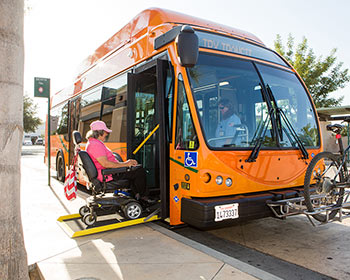Research Reports
Report Details
Abstract
 Older adults, people with disabilities, individuals in low-income households, and those living in rural areas can face significant mobility challenges. This study examines travel behavior and mobility of these transportation-disadvantaged groups, including trip rates, miles driven, mode shares, and other behavior, by analyzing data from the 2017 National Household Travel Survey (NHTS). The study also examines trends in travel behavior, by comparing results to data from 2009 and 2001. The data reveal significant differences in travel behavior based on age, disability, income, and geography. Older adults, people with disabilities, and those with low income are shown to drive less and make fewer trips. Results from a cluster analysis show that groups comprised of people who are lower income, older, and those who have a condition or disability were the most transportation disadvantaged. Those in rural areas are more reliant on the automobile, and while they drive more miles, they take fewer trips per day on average. Results also show a continuation of trends, including a narrowing of the gender gap for older adults, a decrease in overall trip rates and miles driven, and an increase in transit mode shares. Understanding trends in the travel behavior of transportation-disadvantaged populations in rural areas and other geographic contexts is important for understanding how well the mobility needs of these populations are being met and for informing policy and transportation investment decisions.
Older adults, people with disabilities, individuals in low-income households, and those living in rural areas can face significant mobility challenges. This study examines travel behavior and mobility of these transportation-disadvantaged groups, including trip rates, miles driven, mode shares, and other behavior, by analyzing data from the 2017 National Household Travel Survey (NHTS). The study also examines trends in travel behavior, by comparing results to data from 2009 and 2001. The data reveal significant differences in travel behavior based on age, disability, income, and geography. Older adults, people with disabilities, and those with low income are shown to drive less and make fewer trips. Results from a cluster analysis show that groups comprised of people who are lower income, older, and those who have a condition or disability were the most transportation disadvantaged. Those in rural areas are more reliant on the automobile, and while they drive more miles, they take fewer trips per day on average. Results also show a continuation of trends, including a narrowing of the gender gap for older adults, a decrease in overall trip rates and miles driven, and an increase in transit mode shares. Understanding trends in the travel behavior of transportation-disadvantaged populations in rural areas and other geographic contexts is important for understanding how well the mobility needs of these populations are being met and for informing policy and transportation investment decisions.